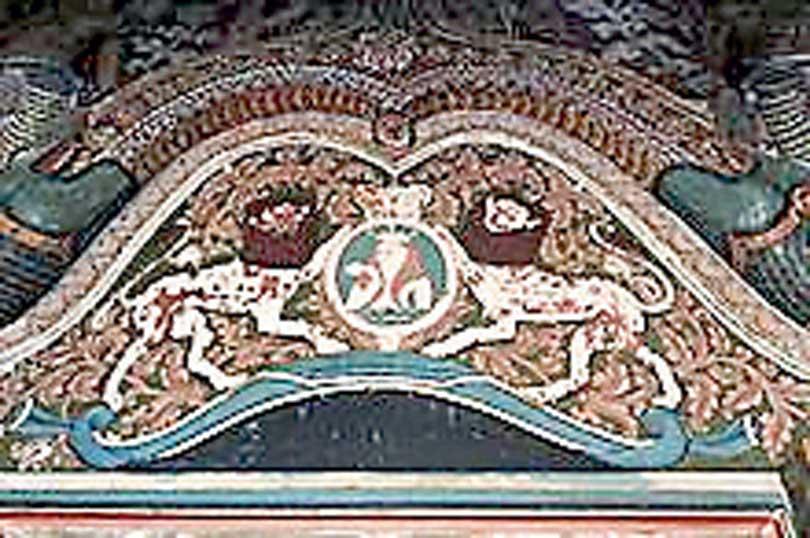Reply To:
Name - Reply Comment

Kotte Raja Maha Viharaya
 The period from 1848 to 1948 presents something of a paradox for the historian or scholar, who tends to rationalise a historical epoch in terms of rebellion or affirmation of political, economic, and social order.
The period from 1848 to 1948 presents something of a paradox for the historian or scholar, who tends to rationalise a historical epoch in terms of rebellion or affirmation of political, economic, and social order.
The uprising organised by Ihagama Unnanse in 1817 sparked off a series of rebellions, which ended with the execution of Puran Appu in 1848.
Until then the country was divided into two camps: Those for the continuation of British Rule and those for the restoration of traditional privileges.
After the annexation of Kandy, the concentration of power in the British bureaucracy had left the aristocracy in a precarious situation. As such the latter made their opposition clear, even if that meant being led by low-caste non-residents.
It is not so easy to rationalise the post-1848 order in terms of such a simple pro-/anti-colonialist binary.
In other words, the seemingly never-ending conflict between the elites and rebels did not continue after the Matale uprising.
There are several reasons for this, not least among them the rise of an arrack renting bourgeoisie, the opening up of the economy in the Kandyan highlands at the expense of the traditional elite, the mass recruitment of locals into the bureaucracy, and the emergence of a strong, radical proletariat, whose interests differed from those of peasant rebels.
Historian Robert Tombs wrote of a coming together of Reformism and Capitalism in Victorian England. This played out in the period discussed in Ceylon as well.
However, before attributing to colonial administrators a spirit of reformism they did not have, it’s important to understand that their proposals for reform did not take them beyond certain limits.
Colebrooke and Cameron were influenced by Utilitarianism, but the philosophy of Jeremy Bentham was not all that shaped their thinking; they were moulded by pragmatic considerations also: the Evangelical influence, not to mention the colonial land settlement theories of Edward Gibbon Wakefield.
That even their recommendations were critiqued by otherwise mild-mannered figures such as Robert Wilmot-Horton (Who called them “Crude and impractical”) underscores the limits within which these reformists had to work; this rift, between the progressive aspirations of officials and the rigid conservatism of those higher up, was to continue until 1948.
In many ways, it accounts for the ambiguity of the responses to British rule from not just the elite, but also the people and even the Buddhist clergy.
I have mentioned the clergy, and I must start with them. In The Work of Kings, H. L. Seneviratne points out that it wasn’t just the Christian clergy who were supportive of colonial rule; sections of the Buddhist clergy were supportive of it too.
This may be indigestible for certain romantic historians, but it was the truth. Even as thoroughly pro-Sinhala-Buddhist a document as the continuation of the Mahavamsa written by Yagirala Pannananda, valourised the British.
No doubt that had to do with the popular perception of the last kings of Kandy as being hostile to Buddhism and of the Governors, who took their place and became the custodians of the Dalada Maligawa as being sympathetic towards the people, but the truth was that as long as administrators did not interfere with “Buddhist Affairs”, they were viewed benignly.
This was truer of low-country priests than of the priests of the Udarata, and it was reflected even in the architecture of the temples: the inner chamber of the Kotte Raja Maha Viharaya, for instance, had a portrait of Queen Victoria over its entrance door attached to it later on; the Viharaya, interestingly enough, was affiliated to a group belonging to the Siyam Nikaya, which had its roots in Kandy.
 What was the reason behind this paradox? Starting in 1832, the Government divested itself of any links with monasteries. Colebrooke and Cameron (the former more than the latter) were not in favour of continuing those links.
What was the reason behind this paradox? Starting in 1832, the Government divested itself of any links with monasteries. Colebrooke and Cameron (the former more than the latter) were not in favour of continuing those links.
Governor Wilmot-Horton in a Proclamation in 1834, just two years after the abolition of Rajakariya, fired the first shot by declaring that the Government would no longer enforce attendance of tenants at religious festivals as it had before; gradually, over the years, the responsibility for the upkeep of temple lands and festivals fell more and more on the monks.
A. H. Mirando in his penetrating study of Buddhism in the 17th and 18th Centuries observes that the private ownership of temples by Chief Prelates, while not sanctioned by the tenets of their faith, came about with the entry of a class of monks referred to as Ganinnanses
When the British Government divested itself of not just the responsibility for the upkeep of temple properties but also of the title to them, it sped up a process of degeneration that had begun with these ganinnanses in the late 16th century.
Before 1832 there had been official support for monasteries. The British did away with such support with a series of proclamations and ordinances that made the chief prelates, legally, the owners and dispensers of temple lands.
To maintain these lands, prelates often had to go to extreme lengths: Kitsiri Malalgoda has written of priests who had to lease out temple property and live on the rents.
Buddhist monks had formed the epicentre of the resistance to British rule.
With their powers drastically reduced, if not done away with, it was only to be expected that, as K. M. de Silva has noted, by the last quarter of the 19th century “The long history of Kandyan resistance” would come to an end.
When Ponnambalam Ramanathan asked that Vesak be made an official holiday, the Government acceded despite a statement of the Sinhalese member A. L. de Alwis that he preferred the Sinhala - Tamil New Year
The Kandyan regions, the outlying areas of which had been demarcated as separate administrative units by Colebrooke and Cameron (If at all to suppress the possibility of rebellion), had been the successor to Sitawaka in its staunch tradition of nationalism; by the time of the Matale rebellion poverty and illiteracy had forced it to lag behind in almost every sphere.
The consequences were certainly far-reaching. In the 1920s, when William Manning tried to hijack the Ceylon National Congress, he did so by provoking opposition to its domination by low-country elites from the beleaguered, underrepresented Kandyans.
The formation of the Kandyan National Assembly in 1923; the call for representation for Kandyans, and the demand made by Kandyan members of the Legislative Council for a Federal Structure in 1927 showed that Separatism was, then as now, seen as a way of addressing the grievances of such historically marginalised communities.
With the leadership of Buddhist monks and monasteries challenged, the Government also no longer had to rely on missionaries.
By 1850, the influence of the Evangelicals had thus, if not considerably then significantly, waned.
To be sure, at no point in time was the Government completely secular – until the late 1880s one had to adhere to the “Government Religion” (Anglicanism) if one wished to join the Civil Service – but it was less constrained by religious considerations than before.
The missionaries did continue to hold on to their monopoly over education and get grants from the State, but they were frustrated by what they saw as a reduction in official support.
At the time of the Kotahena Riots of 1883, this Secularisation of British politics in the island began to crystallise more clearly.
The riots showed (As they would show again in 1915) that the Government did not care greatly for the spread of faith considered as heathenish as long as it did not interfere with the administration of the country.
In this they frustrated Catholic Priests; Archbishop Melizan, in a despatch written in 1900, lamented that the police in the riots had “Seemed to favour the Buddhists” and the Government “From the beginning” had appeared to be supporting them.
Later, when Ponnambalam Ramanathan asked that Vesak be made an official holiday, the Government acceded despite a statement of the Sinhalese member A. L. de Alwis that he preferred the Sinhala -Tamil New Year.
Around that time a Commission of Inquiry on the 1883 Riots showed a difference in the way officials viewed the clashes between Buddhists and Catholics: While for the Catholic Priests the chief cause was the “impious and seditious” pageants of the Buddhists; for the Commission one cause was the inability of the Catholic officials “to control the more ignorant of their flock.”
One prime reason for the resurgence of Buddhism in the late 19th century, then, was this curious, yet by no means inexplicable, the attitude of the colonial State.
The writings of K. M. de Silva, Kamalika Pieris, Kumari Jayawardena, Vito Perniola,
A. H. Mirando and Vinod Moonesinghe
were used for this article.